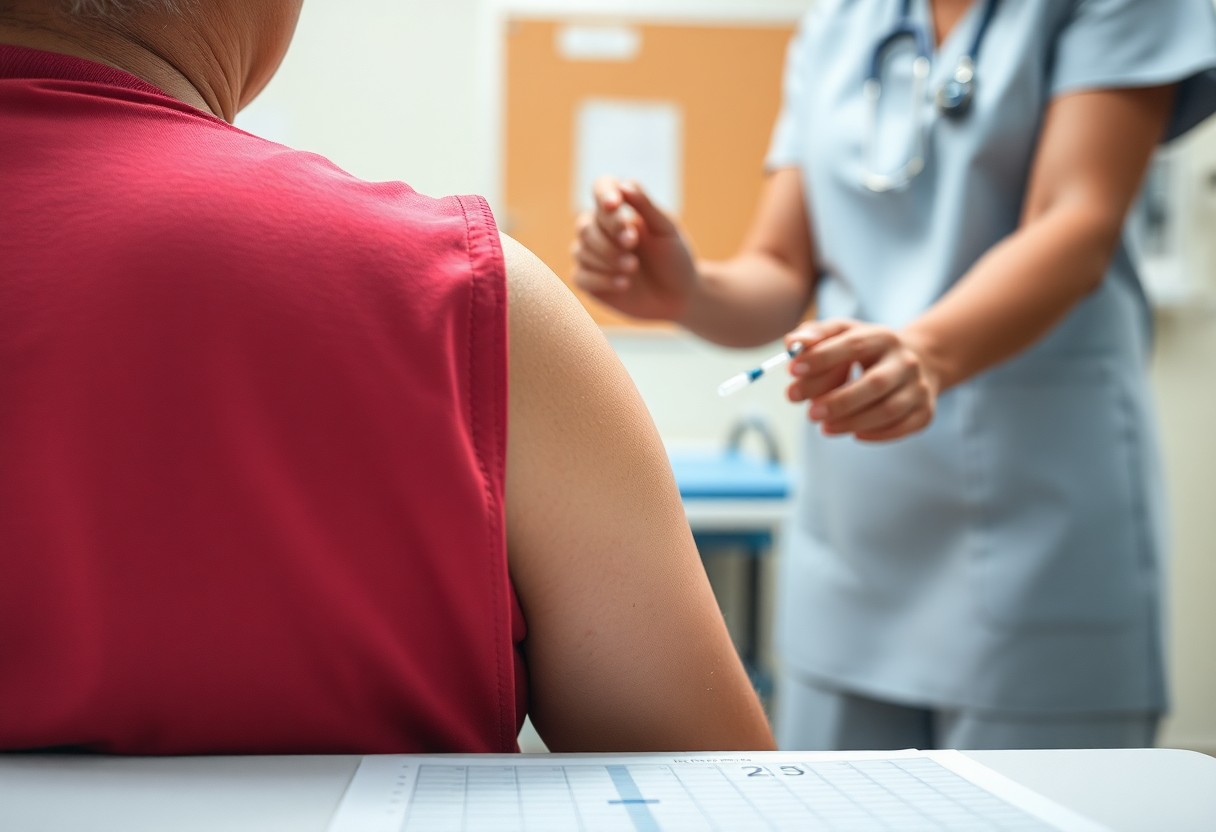You may find yourself struggling with the pain and limitations of a SIRVA injury, but there is a path to recovery that can make a significant difference. My journey to healing began with physical therapy, which not only improved my range of motion but also minimized the persistent discomfort. By committing to a tailored program, you can actively engage in your recovery, restoring strength and flexibility to your shoulder. Understanding the importance of consistent rehabilitation is key to overcoming this challenging condition and reclaiming your daily activities.
Understanding SIRVA
Your understanding of SIRVA, or Shoulder Injury Related to Vaccine Administration, is crucial for recognizing the impact it can have on your health. This type of injury typically occurs when a vaccine is improperly administered, particularly when injected too high on the shoulder. Knowing the causes and effects can empower you to seek appropriate treatment and recovery options.
Definition of SIRVA
With SIRVA, you experience shoulder pain due to trauma from vaccine injection. This condition arises when the vaccine needle penetrates deep into the shoulder joint or surrounding structures, leading to inflammation and discomfort. Understanding this definition helps you identify and differentiate SIRVA from other shoulder-related issues.
Common Symptoms and Diagnosis
Before seeking medical assistance, it’s important to recognize the common symptoms associated with SIRVA, including shoulder pain, swelling, and limited range of motion. Diagnosis often involves a physical examination and may include imaging tests to rule out other conditions. Your healthcare provider will assess the symptoms and history to confirm SIRVA and outline a treatment plan.
For instance, you may experience varying degrees of pain, often described as a dull ache or sharp discomfort, particularly when raising your arm. Other symptoms can include swelling, tenderness to the touch, and a reduced range of motion. Proper diagnosis is key, as it helps you avoid misdiagnosis and ensures the right treatment path. Addressing these symptoms promptly can lead to a more favorable outcome, allowing for a better response to treatment and quicker recovery journey.
The Impact of SIRVA on Daily Life
There’s no denying that SIRVA can significantly alter your daily routine. You may find simple tasks, such as lifting objects or reaching overhead, to be quite challenging. It can disrupt your work life, leisure activities, and even your ability to perform basic household chores. This injury not only affects your physical capabilities but can also influence your overall quality of life, highlighting the importance of understanding its broader impact on you.
Physical Limitations
After experiencing SIRVA, you may face various physical limitations that hinder your mobility and strength. Everyday actions like getting dressed, exercising, or even resting comfortably may become daunting challenges. As you navigate these obstacles, it’s vital to explore strategies to adapt, find assistance, or seek physical therapy to regain your strength.
Emotional and Psychological Effects
Among the psychological repercussions of SIRVA, feelings of frustration, helplessness, and anxiety may arise as you grapple with your condition. It can be disheartening to cope with a body that no longer functions as it once did, amplifying stress in your life.
Due to the persistent pain and limitations from SIRVA, you may experience heightened levels of stress, anxiety, and even symptoms of depression. These emotional challenges can impede your motivation to engage in activities you once enjoyed, leading to feelings of isolation. Additionally, the ongoing struggle with physical pain can create a cycle of negative emotions, making it necessary to seek support from friends, family, or mental health professionals. Acknowledging these feelings is a vital step towards your healing journey.

The Healing Journey
Any injury can feel overwhelming, but your healing journey is a personalized experience that can lead to great growth and recovery. The process involves understanding your unique needs, keeping an open mind, and being patient with yourself as you progress through the stages of healing. By embracing this journey, you can find a way to reclaim your strength and well-being.
Personalized Treatment Plans
Treatment plans tailored specifically for you play a significant role in your recovery from SIRVA. These plans take a comprehensive look at your symptoms, medical history, and lifestyle, ensuring that your therapy addresses your unique challenges. By focusing on your individual needs, the treatment plan will enhance your healing process and lead you toward achieving your goals.
The Role of Physical Therapy
To successfully recover from your SIRVA injury, incorporating physical therapy into your treatment plan is vital. This focused approach allows you to regain strength, improve flexibility, and manage pain effectively.
Due to the specialized exercises and techniques used in physical therapy, you will find that it not only targets the specific muscles and joints affected by your injury but also helps in restoring your overall functionality. Working with a qualified physical therapist ensures that you receive professional guidance throughout your journey, and promotes optimal recovery. As you engage in consistent therapy sessions, you’ll likely notice improved mobility, reduced discomfort, and a significant boost in your confidence, paving the way towards returning to your daily activities.
Complementary Healing Approaches
Now that you have a foundational understanding of your SIRVA injury, exploring complementary healing approaches can further support your recovery. Integrating these methods into your healing journey may provide relief and enhance your overall well-being, allowing you to take an active role in your health.
Mindfulness and Meditation
Behind each healing process, mindfulness and meditation act as powerful tools to help you connect with your body and mind. Practicing mindfulness allows you to cultivate awareness of your thoughts and feelings, promoting relaxation and reducing stress. By dedicating just a few minutes each day to meditate, you can create a more harmonious environment for healing.
Nutrition and Lifestyle Changes
An important aspect of your recovery involves making positive nutrition and lifestyle changes that can support your healing process.
Also, focusing on a well-balanced diet can significantly impact your inflammation and healing rates. Incorporating anti-inflammatory foods like leafy greens, nuts, and fatty fish can help reduce soreness and improve recovery time. Staying hydrated is equally important, as it aids your body in flushing out toxins and maintaining optimum function. Additionally, consider adopting regular exercise and sleep routines, which can enhance your mood and energy levels. By making these positive lifestyle changes, you empower your body to recover more effectively from your SIRVA injury.
Success Stories
Despite the challenges that arise from SIRVA injuries, many individuals have found pathways to heal and reclaim their lives. With determination, support, and the right strategies, these success stories highlight the resilience of those who have navigated this journey. By sharing these experiences, you can gain inspiration and hope, proving that healing is indeed possible.
Personal Testimonies
To illustrate the power of healing, personal testimonies reveal the transformative journeys of individuals who have overcome their SIRVA injuries. These stories not only highlight recovery strategies but also serve as a reminder that you are not alone in your struggles. Hearing how others have triumphed can be incredibly motivating and enlightening.
Lessons Learned
An necessary component of your healing journey is understanding the lessons learned from others who have faced similar challenges. These insights can guide you towards effective coping strategies and reinforce your commitment to recovery.
Testimonies often emphasize the value of advocating for yourself, particularly when it comes to seeking appropriate care. It’s important to communicate openly with healthcare providers about your symptoms and progress. Additionally, incorporating physical therapy and mindfulness practices into your routine can significantly enhance your healing process. Patience is another vital lesson; recovery takes time, and staying dedicated to your journey can lead you to a more fulfilling life post-injury.
Preparing for Future Preventative Measures
All it takes to protect yourself from future SIRVA injuries is understanding and implementing preventative measures. You can significantly reduce the risk of this condition by staying informed about the best practices for receiving vaccinations. This proactive approach will empower you to advocate for your own health and ensure that you receive your vaccines safely.
Education and Awareness
To enhance your understanding of SIRVA and its potential consequences, prioritize ongoing education about vaccination procedures and the risks involved. By gaining comprehensive knowledge, you will be better equipped to engage in informed discussions with healthcare providers, ensuring that you receive proper care and avoid pitfalls in the vaccination process.
Proper Vaccine Administration Techniques
Below are some key techniques to ensure safe vaccine administration: always administer vaccines in the correct anatomical site, prefer intramuscular injections in the deltoid muscle for adults, and utilize the right needle size based on the individual’s body composition. Following these guidelines not only promotes efficacy but also minimizes the risk of shoulder injuries.
In fact, proper vaccine administration techniques can greatly reduce the incidence of SIRVA injuries. Using the appropriate needle length and gauge ensures that the vaccine is injected in the correct part of the muscle, lowering the chance of complications. Injecting at a specific angle and targeting the deltoid muscle helps avoid the surrounding nerves and blood vessels. Furthermore, ensuring that the vaccination environment is conducive to calm and controlled administration can further decrease anxiety and promote optimal outcomes. Your safety during vaccination is paramount, and following these techniques will contribute to your overall health!
Final Words
Summing up, finding the one thing that helps you heal from your SIRVA injury can significantly impact your recovery journey. Whether it’s a specific treatment, support network, or lifestyle change, identifying what works best for you is vital. Be proactive in exploring options and consulting with healthcare professionals, as this will empower you to regain control over your health. Healing may take time, but with the right approach tailored to your needs, you can move towards a more comfortable and active life.



















